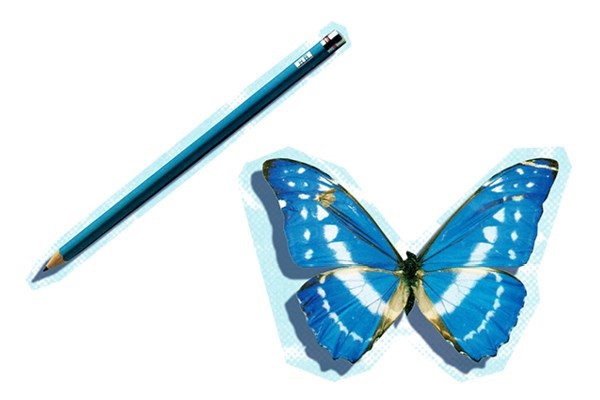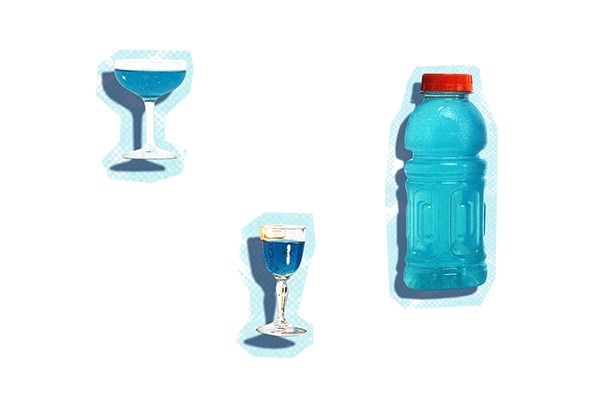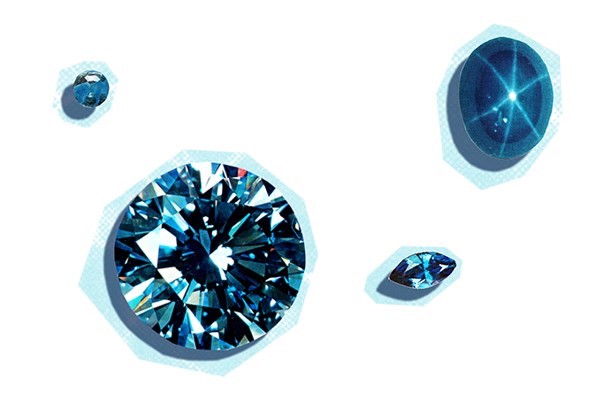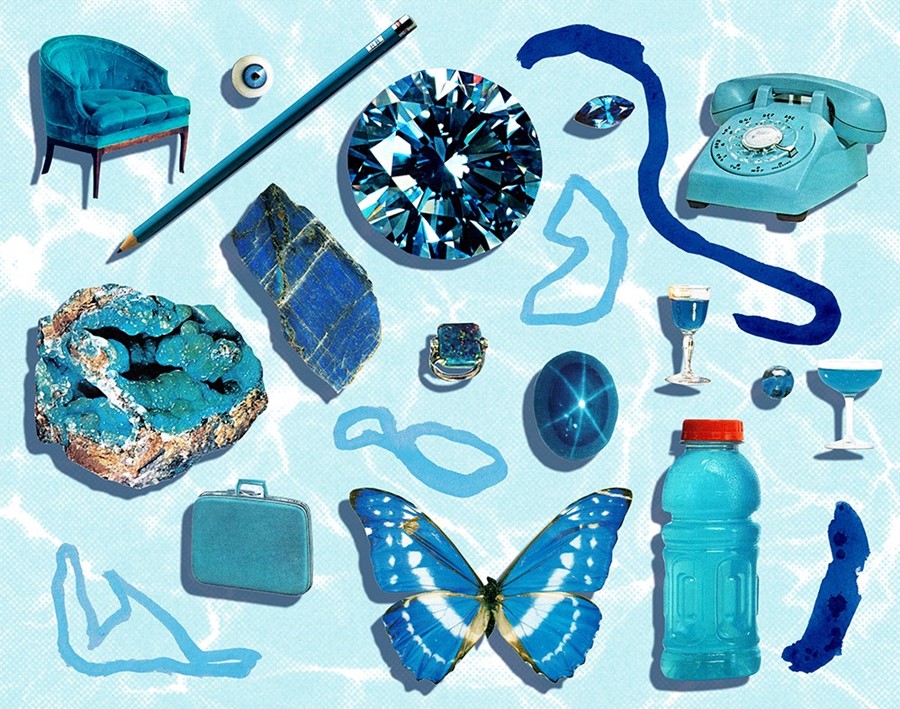AnOther takes a deeper dive into the serene shade of swimming pool blue – exploring its origins and influence within contemporary art, film, fashion and music
It’s a strange irony that while water lacks a colour of its own, in the mind’s eye it takes on such resonance that its hues become powerful symbols. From the expansive and deep blue-green of the open ocean to the serene turquoise of the swimming pool, the range of blues associated with water can stir layers of buried emotions, memory and nostalgia that lie within us all. So it’s little wonder, then, that the colours and the images associated with them are so often a source of artistic inspiration.
The blue of the swimming pool, laid out in a rectangle in a backyard or a cold tiled hall in the sports centre, can be read as a way to define a small part of the sublime and bring it into the domestic spheres of our lives. Watery blue can spell freedom, leisure and play, those things so essential to the child but often difficult to find a place for in adulthood. And yet it can also suggest emotional depth. Maggie Nelson’s book-length prose poem Bluets, published in 2009, gives blue its full weight. “Suppose I were to begin by saying that I had fallen in love with a color,” it begins, and from there the author takes us through desire and grief and loss to position the colour as it stands in our emotional life: a long-standing symbol of what we long for and what we may not ever be able to have.

In Art
Turquoise as the colour of escapism and fantasy is perhaps best summed up in the work of David Hockney. Painted between 1964 and 1971, Hockney’s pools become a symbol of California’s alluring lifestyle, light-filled, glimmering and colourful, a far cry from the Yorkshire he had grown up in. Painting swimming pools posed an obvious challenge to the painter, since water’s properties are so intangible. But Hockney found he could capture the movement and tension of the pool in stylised patterns of shades of blue, representing the playful reflection of light. Hockney wasn’t the only painter drawn to water’s diaphanous blues; in the 1970s abstract expressionist Helen Frankenthaler was soaking canvasses with shades of blue as in Ocean Drive West 1, (1974). Drawn to water and the sea throughout her life, Frankenthaler tended to paint with her canvas on the floor, pouring wide pools of paint to create the same kind of movement and grace shared by the blues of the water.

In Music
Testament to the colour’s emotional depth is found everywhere in music. Joni Mitchell’s cult 1971 album Blue, with her portrait in vivid cyanotype on the cover, doesn’t just pay heed to blue’s gloomy emotional resonance. In the title track, Mitchell uses the colour to stand in for memories and emotions that might be too potent or painful to address head on. “Blue, there is a shell for you / Inside you’ll hear a sigh,” she sings plaintively to a lost lover. In Leonard Cohen’s Famous Blue Raincoat, the colour becomes a signature, like a calling card left at the scene of a crime. More recently, flame-haired Florence Welch pins down the glory of it all in How Big, How Blue, How Beautiful, a song that lauds the sublime and wide-open nature of the sky itself. Inspired by the Los Angeles skyline, she locates the most natural synonym for the splendour of swimming pool blue there is.

On Film
Since Dustin Hoffman first floated across the family pool to a Simon and Garfunkel soundtrack in The Graduate, the languid shape of the swimming pool glowing in the background became a poignant trope in American cinema. Often representing youthful hedonism rather than glamour or romance – see Billy Crudup jumping off the roof into a grimy pool at a house party in Almost Famous – the backyard pool’s blue can bring a glimmer of aspiration and faded dreams to the most suburban drudgery. Elsewhere, French director Céline Sciamma claimed in an interview that all today’s French movies need a pool scene. Her 2007 film Water Lillies sees jealousy and sexual tension play out within a teenager’s synchronised swimming team, and the municipal pool becomes the location for adolescent anxiety, longing and lust as the lives of three different girls play out around the water.

In Fashion
Vivid shades of watery blue often play a key supporting role in the creation of fashion fantasy – think of Slim Aarons’s portraits of poolside socialites like C.Z. Guest, or David Gandy juxtaposed against sky and sea off the coast of Capri in Dolce and Gabbana’s Light Blue ads. But it has the power to bring fantasy to life on the wearer, too. Lupita Nyong’o chose her pale blue Prada dress for the 2014 Oscars on the basis that it reminded her of growing up in Nairobi, which seems even more personal when you recall that she was collecting an Oscar for best-supporting actress that evening. In fashion, its compelling intensity can also contribute to a kind of collective cultural memory. When newspapers printed paparazzi photos of Princess Diana sitting on a yacht’s diving board in a striking turquoise one-piece in August 1997, nobody knew that it would be one of the final candid photos of her. After her death later that month, the playful, honest images, marked with that pop of light teal, became iconic, imbued with the melancholy of distance.
